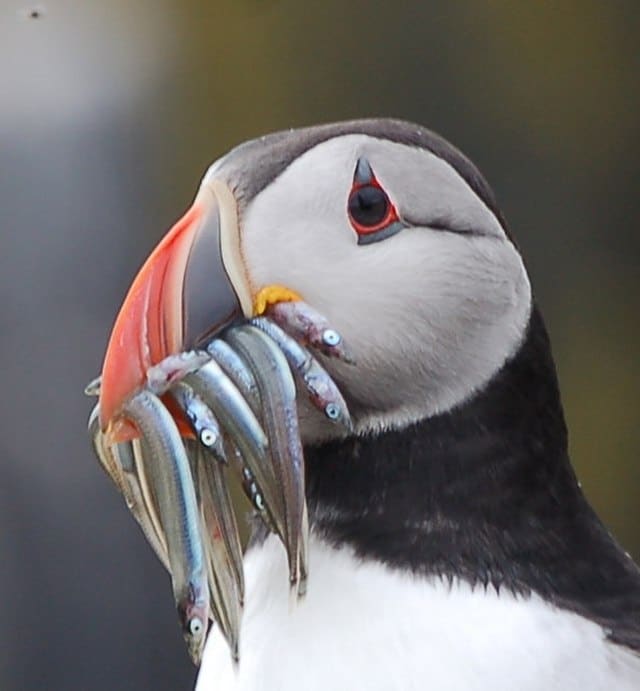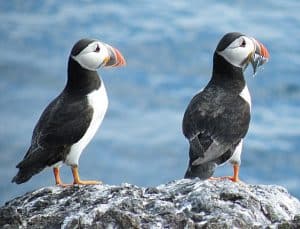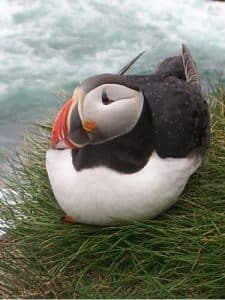
The Atlantic Puffin, one of the world´s most photographed birds, may be in more danger of extinction than scientists had estimated. It has already been considered a species in grave danger of extinction, but new data from Iceland indicates a 70% fall in its population since 1975. 22 May is the International Day for Biological Diversity.
While Europe houses 90% of the puffin population, 60% of the population breeds in Iceland. Its endearing features and rainbow-coloured beak has made it a favourite of photographers and children book authors.

Anne Burgess
Creative Commons Attribution-Share Alike 2.0
The Atlantic puffin is on the International Union for Conservation of Nature (IUCN) Red List of Threatened Species for birds, and until the publication of the latest data the Icelandic population was believed to have decreased by “only” 40% since the mid-seventies.
“The population’s decline is at least partially caused by the increasing sea surface temperature around Iceland,” says biologist Erpur Snær Hansen one of the authors of a recent study. The reasons are simply lack of food for the birds due to the increased temperature in the sea.

Charles J. Sharp
Creative Commons Attribution-Share Alike 4.0
Although puffin-watching is a major tourist attraction in Iceland, it is also hunted for food. Hunting records that go as far back as 140 years are used as source material by scientists.
“Hunting may account for 10% of the decrease,” says Hansen.
Biological diversity
As the global community is called to re-examine our relationship to the natural world, one thing is certain: despite all our technological advances we are completely dependent on healthy and vibrant ecosystems for our water, food, medicines, clothes, fuel, shelter and energy, just to name a few.
This involves respecting, protecting, and repairing our biological wealth.

A puffin in Látrabjarg in Iceland. Photo: Eysteinn Guðni Guðnason CC BY-SA 3.0
A historic agreement, the Kunming-Montreal Global Biodiversity Framework, was signed in December 2022 that sets goals and concrete measures to stop and reverse the loss of nature by 2050.
That is why the theme of the International Day for Biological Diversity is from agreement to action: build back biodiversity. The slogan promotes the idea that, now that we have an action plan agreed upon at a global level, we must implement all the measures that the agreement contemplates before 2030.





